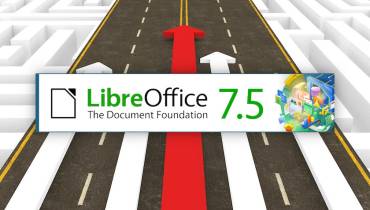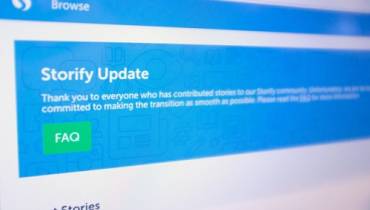12 Fundamental Tips for Writing Effective Website Articles

Writing content for the web is considerably different from writing content for print. People interact differently with articles they find online than with articles they find in print (obviously). If you want to craft clear, meaningful and effective web copy that resonates with your readers, you need to optimize your articles for screen reading and online publication.
Here are 12 fundamental tips that will help you master the beautiful art and science of crafting effective web articles.
1. Headlines
Craft compelling headlines. Web readers are bombarded with a lot of information online. They skim through all the content they find by scanning headlines. Within five seconds, they make a decisions on whether to read the article. Your article headline should arrest readers' attention immediately and compel them to read at least the first sentence of your piece.
Coax readers into your text with a powerful headline that appeals to their self-interest. Tell them your value proposition and make it immediate. How is it they will benefit by reading your article? Be concise and avoid misinterpretations by steering clear of ambiguous language, clever wordplay and literary allusions unless, off course, you are writing for a highly educated audience.
Inject news into your headline whenever possible. Tell readers something new and meaningful that they don't already know. Challenge the reader's belief with a punchy, controversial or interesting assertion. Headline structures such as in the "How-to" article format are highly effective for instantly grabbing readers' attention and compelling them to read your articles.
2. Topics
Aim for evergreen topics. Evergreen topics remain useful and relevant to readers now and even five years down the line after being published. Of course, you can and should also write articles on current and timely topics like breaking news, world events and holiday seasons. But, if you want to produce articles with more staying power, write on topics that remain fresh for the long haul.
Pick general interest topics that are relevant, actionable and informative all year round and write around them. Avoid using words like “last month” or “last year” when referring to dates in your articles. Instead, use words like “as of January 2013.”
Try not to mention prices without giving a reference point or date for when the prices were applicable. Prices fluctuate many times as the years pass and may not be accurate a few years after your article is published.
3. Language
Write in plain English. Most online readers are put off by articles that are difficult to read and understand because of the choice of words used. Communicate clearly and enhance reader enjoyment by using familiar, everyday words in your articles. Common, everyday words reduce instances of confusion, misinterpretation and facilitate comprehension.
If a word you use has more than two syllables, it is probably too difficult for the majority of people searching for information online. Find an alternative word that is punchy, shorter and more familiar with the majority of people. For example, instead of 'eliminate" you could use "end."
4. Paragraphs
Write short paragraphs. Short paragraphs encourage readers to follow a piece of writing. An ideal paragraph for web articles should be three to five sentences long and about 75 words in total. Sometimes a paragraph can be longer or shorter, but strive not to deviate too far from the ideal. Short paragraphs are easier on the eye and more compelling to read.
Large chunks of text on screen intimidate web users and cause them to scamper away from your article. Make sure your introductory paragraph, perhaps the most important paragraph in the article, is especially powerful and concise to attract more readers.
5. Structure
Break up large chunks of text. Breaking up large chunks of text in your article helps to highlight your main points and facilitates quick scanning of the article. Web users should be able to skim through your article to find out what the article is about and access the main points of the article as quickly as possible.
You should never put your readers in a situation where they have to painstakingly go through large blocks of text to find small bits of useful information in your article. Most web readers are not patient enough to do so. They will quickly scamper away to other online resources to avoid the trouble of having to wade through daunting chunks of text on screen.
Use headings and subheadings to break text into smaller chunks that readers can read without getting a headache. Ensure the headings and subheadings describe or summarize the text below them accurately. Also, use bulleted lists, numbered lists, charts, graphs, images and tables where appropriate to highlight separate points and enhance readability.
6. Voice
Use the active voice. Active voice allows for leaner and more direct writing. It reduces verbiage in sentences, making your writing concise and more clearer. Sentences have a subject, which is the person, group or thing doing an action; a verb, which is the action itself; and, an object, which is the person or thing the action is done on.
In active voice, the subject performs the action, while in passive voice the subject is acted upon or receives the action. For example, “James kicked the ball” is active voice and “The ball was kicked by James” is passive voice. Use the active voice most of the time to engage readers directly and facilitate precise delivery of your message.
Passive voice is not necessarily wrong; it is merely less direct. It may actually be more effective in some instances, such as where you want to emphasis the actions of characters in works of fiction like poems. But, active sentence constructions are generally more suited for web writing where every word counts.
7. Adjectives
Avoid empty adjectives. Adjectives like “great,” "wonderful," “best” and "fabulous" don’t provide any real meaning or context to what you are talking about. They often represent your own personal opinion, which might not always agree with the facts and opinions of others.
Use concrete adjectives instead that enrich your articles with vivid, straight-to-the-point and easy to understand meanings. Just because you say something is “great” doesn’t mean everyone else will agree with you. Back up your points using concrete adjectives that point to facts not rhetoric and personal opinion.
Also, avoid empty adjectival phrases like "the most helpful" and "one of the best" or qualify these phrases with concrete evidence from trustworthy sources. Concrete adjectives inject believability, authority and professionalism in your articles.
8. Keywords
Incorporate relevant keywords. Keywords help web users find your article amidst millions of other content online. Do not, however, obsess with using keywords. Just think about what words your target audience might type in the major search engines like Google when searching for the information you provide in your article and use those words sparingly.
If you want to write an article about cars, for example, you could think of keyword phrases like “Best Mercedes Benz” or “Luxury Cars” that web users are likely to enter in the search engines when looking for information on cars. Write an informative article around your keyword to meet a specific need for information on the broad topic of cars.
Incorporate between one and three relevant and related keywords in your articles to help search engines know that your articles talks about those particular keywords. Make sure the keywords flow naturally within your text. Don’t stuff too many keywords in your article because stuffing will only destroy your article flow and dilute all your good work.
9. Credits
Credit your sources always. If you use other people's data, statistics or input to develop your article, acknowledge them with credits. One way to do this is to cite your sources from within the body of the article using phrases like, “According to …” and “Scientists from the Institute of…say….”
Another way to give credit is to make a reference list at the end of your article that provides the details and or contact information of all your sources. Crediting sources is standard web writing practice that injects authority and professionalism in your writing. It is also a mark of good ethics, which helps prevent instances of plagiarism.
10. Spelling/typos
Spell check and remove typos. Write your articles in a good word processing program like Microsoft Word and look out for typos and bad sentence constructions that are often highlighted in a different color by the word processor. Correct all highlighted typos and bad sentence constructions as (or after) you write.
Run your article through a spelling and grammar checker when you are finished writing because minor mistakes sometimes escape your word processing program. If possible, allow the article to “cool off” for a few hours or days and come back to it with fresh eyes. You will be able to catch spelling and grammar problems that may have escaped your attention earlier.
11. Plagiarism
Avoid plagiarism at all costs. Plagiarism is strictly forbidden everywhere. Plagiarizing is lifting another person’s work and presenting it as your own. The worst cases of plagiarism can result in legal law suits against you on the grounds of copyright violation.
You can “accidentally” plagiarize another person’s work. Many English words and phrases are similar, which means phrases you use in your article can coincide with those in another article on the web. Run your article through a plagiarism checker to catch sentences and phrases that are similar to those in other web articles and rewrite them.
Copyscape is the industry standard plagiarism checker used by many publishers and webmasters. It costs about $0.05 to use Copyscape to check for duplicate content. There are many other paid and free plagiarism checkers you can use. Find suggestions of some of the top plagiarism checkers in our Best Web Tools for Writers page.
12. Back up
Back up your articles. Yes, this should be obvious. However, some writers forget to save/back up their articles before they send them to clients or submit them for publication. Things go wrong sometimes. You need to backed up your articles just incase articles you hand over get lost or a client requests you to re-submit an article you thought you had successfully submitted.
Set your Word processor to automatically save articles after every few minutes as you write. Save the article manually to a location in your hard drive as soon as you finish writing. You may also back up your articles online using tools like Google Docs or one of the other back up tools listed in our Best Web Tools for Writers resource page for additional safe keeping.
See also: 3 Anchor Rules of Web Writing to Follow.




















